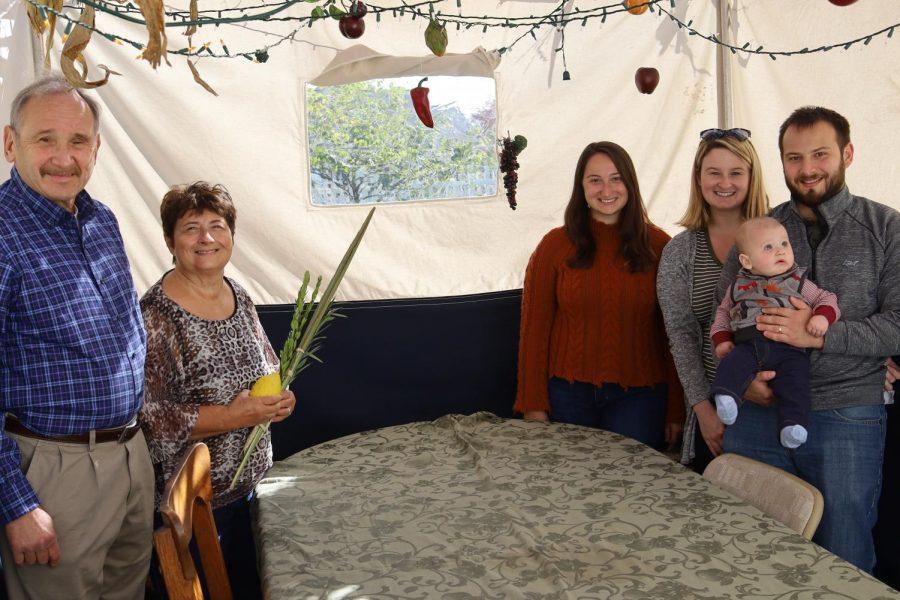Local dentist built a sukkah in the desert — of Saudi Arabia
Published October 9, 2020
Every fall, Dr. Monroe Ginsburg and his family assemble a sukkah in their backyard. They wrap it in canvas and forage for sticks and brush in the woods for the s’chach, the roof. If they need any bracing material, a quick trip to a big box hardware store will do the trick.
Ask Ginsburg, 66, a dentist, about his most memorable sukkah, and he can call up every detail of 1991, the year of his Saudi Sukkah.
Ginsburg, an officer in the Army Dental Corps, had been a dental instructor for Ranger and Green Beret medics and had served as the comprehensive dentist for the 86th Combat Support Hospital at Fort Campbell, Ky.
In 1991, he was serving at Fort Benning, Ga. He also was a lay leader, an officer who conducts services if a rabbi isn’t available. The lay leader also acts as a liaison if a soldier’s family needs assistance with a lifecycle event – bris, funeral, wedding – or if they need to find kosher food.
“I was a lay leader at Fort Benning, and I went to Saudi Arabia in the Gulf War,” said Ginsburg, who lives in St. Peters. “I got a call from the head rabbi, and he asked me to be a lay leader for the whole area, Saudi Arabia and Kuwait.”
During the High Holidays, Ginsburg had a little assistance from a real rabbi, Ammos Chorny, now the spiritual leader of Beth Tikvah in Naples, Fla. Chorny was an Army Reserve rabbi who went on active duty to handle services during Rosh Hashanah, Yom Kippur and Sukkot. For the latter, Chorny and Ginsburg built a sukkah.
“The problem was the Saudis weren’t very tolerant of Jews in the country,” said Ginsburg, who belongs to Kol Rinah. “If you look at the collars of Army officers who are chaplains, the rabbis usually would have their rank on one side of their collar and the 10 Commandments tablet on the other side. Other chaplains would have their rank on one side and a cross on the other side. But in Saudi Arabia, they had their rank on both sides.”
If the Saudis didn’t take kindly to a small religious symbol on a chaplain’s collar, it seemed likely a sukkah in their midst would cause a bit of angst.
“When it came time to build the sukkah, we had the challenge of how to clandestinely build it because you have to have a natural roof,” Ginsburg said. “So we got some PVC pipe for the sides, and we went out into the desert and got palm branches. We had to sneak them into an apartment building. The chaplain told us, ‘Do what you gotta do, just keep it under the radar.’
“There we were with the sukkah and our mini-Maglite, and we’re singing Jewish songs up there, and down below in town, the Muslims are listening to their call to worship over the loudspeakers. So that was for me a really neat religious experience. And it worked out fine. And nobody ever knew – until now.”















